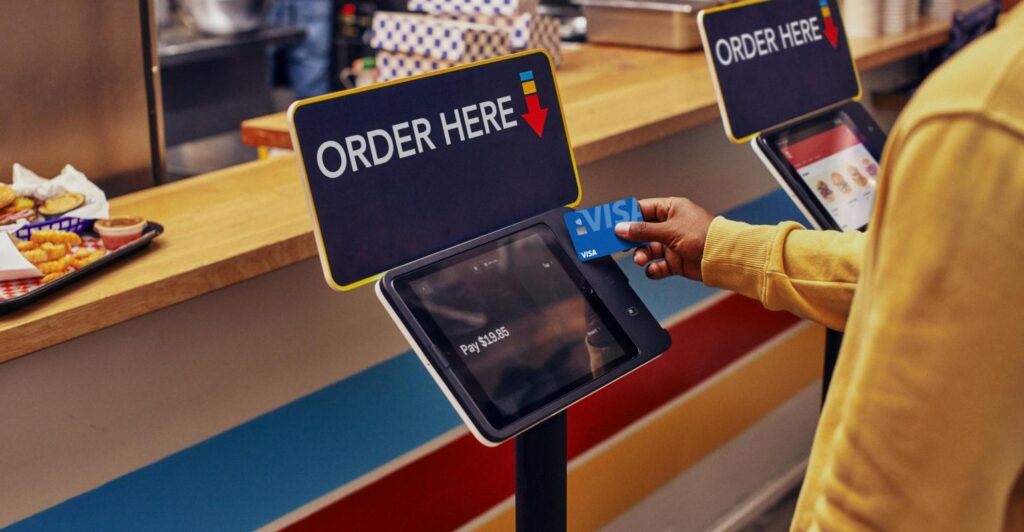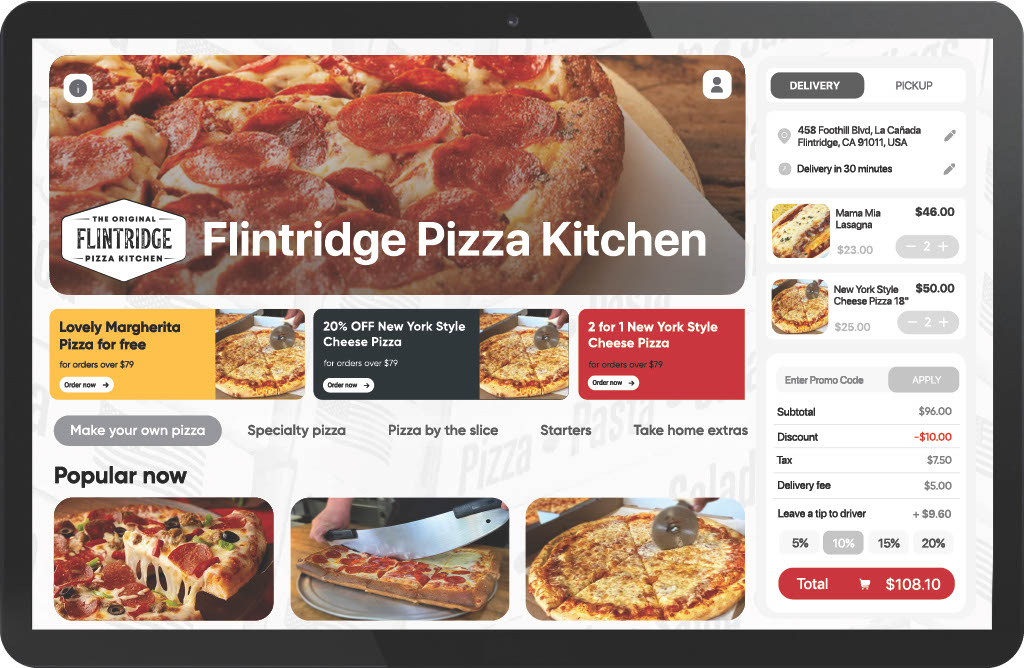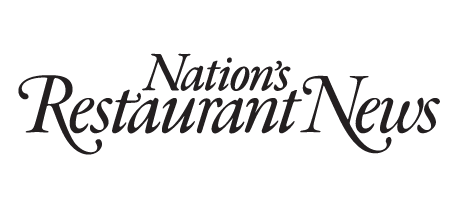Tech Tracker: Tech vendors are embracing hardware again
Multiple tech vendors announced new kiosks and kitchen display systems this month, in a shift toward software and hardware integrations.
15 May 2024
Share this exclusive content from Saladplate

Photo Credit: Square
With the rise of cloud-based technology, there has been a decisive shift in the past few years toward software innovations in the restaurant industry. However, as restaurant operators increasingly demand seamless integrations across their tech stack, and more vendors look toward becoming all-in-one vertically integrated tech solutions, physical hardware innovations have returned to the foodservice industry.
This month, there were several new hardware announcements from tech vendors, including kiosks and KDS technology, from big tech names like Clover, Square, and Epson. The common thread among these announcements is integration. As operators look to simplify their tech stacks (many of which have become complex and unwieldly over the years), assuring that each component speaks the same language through integration is crucial.
Besides the introduction of a new generation of kiosks and other physical technology, other tech news this month includes Uber and Instacart partnering up for restaurant delivery, the launch of a tech platform specifically designed for independent pizzerias, and more.
Tech Tracker rounds up what’s happening in the technology sector of the restaurant industry, including news from restaurants, vendors, digital platforms, and third-party delivery companies. Here’s a breakdown of what you need to know and why:
The new generation of hardware is here
In recent years, operators have moved toward implementing a tech stack that’s more in the clouds than on the counter, but lately, hardware is having a bit of a renaissance.
Even though kiosks and KDS tech are nothing new — the latter might even be seen as an old workhorse of tech operations — there have been several new tech hardware announcements this month that newly emphasize seamless hardware/software integrations and in-house end-to-end solutions.
POS system, Clover, just introduced a new larger KDS, as well as its first kiosk, and both include automatic integrations with each other and the Clover POS system. Similarly, earlier this month, POS system Square introduced Square Kiosk, the tech vendor’s first fully integrated first-party software and hardware solution that is seamlessly connected with Square’s other products. The tech company touts it as a natural evolution of QR code ordering that’s easier both on the customer and employee.
“Kiosks can be a vital tool in many quick-service restaurants, especially as labor costs continue to rise,” Ming-Tai Huh, head of food and beverage at Square, told Nation’s Restaurant News. “While we’ve seen this technology at large restaurants for a few years, Square Kiosk now allows smaller restaurant groups to harness the tech and its efficiency advantages to keep lines moving and orders flowing.”
Other tech vendors that just announced new hardware products include Epson, which introduced the new TrueOrder KDS that is fully integrated with an interactive kiosk, and iPourIt—a self-serve beverage provider that has now added kiosk technology to its capabilities. Like many of these other products, iPourIt showcases how the technology integrates with software, like loyalty programs.
Checkmate is the latest tech vendor to strive for end-to-end status
B2B SaaS company Checkmate — formerly known as ItsaCheckmate — is the latest tech vendor to reimagine its company as more of an end-to-end platform instead of a singular solution that integrates with third-party vendors.
Checkmate announced its rebranding and scaling of services earlier in May beyond a specialization in digital ordering and delivery to include kiosks, loyalty, catering, data analytics, voice AI, as well as integration with first-and third-party services. Like many other tech vendors right now, Checkmate is trying to become a one-stop solution for operators that are looking to pare down their tech stacks.
“As our customers’ needs grew, Checkmate expanded beyond third-party integrations to become a holistic restaurant ordering solutions company,” Kevin Jaskolka, vice president of marketing for Checkmate, said. “Now, brands have more control over their digital operations with the ability to centrally manage menus across channels alongside a product portfolio that includes first-party and third-party ordering, catering, kiosks, loyalty, marketing, voice AI, data analytics, and more.”
PizzaBox AI launches as a tech platform for pizzerias

Although tech vendors have been marketing toward smaller and independent eateries for a while now, this is the first time we’ve heard of a tech platform built specifically for mom-and-pop pizzerias. PizzaBox AI is a tech platform powered by Resto GPT AI that combines digital marketing, direct ordering (or last mile ordering), and data analytics in one place. Photo Credit: PizzaBox AI
“Pizza is an industry within an industry, and it was the first delivery concept that started before the digital revolution,” Gary Chaglasyan, cofounder and CEO of Resto GPT, told Nation’s Restaurant News. “Setting up pizza menus online is very difficult because there are so many layers and modifiers…. We built everything for the pizzeria so it could be run as their own platform. Our platform helps brands promote themselves.”
In addition to online menu setup and digital marketing, a large portion of the PizzaBox AI capabilities is delivery. PizzaBox AI connects pizzerias with last-mile delivery services using first-party drivers. The company also provides direct lines of communication with both the drivers and delivery customers— allowing customers to provide feedback on their delivery experience via SMS. This affectively cuts out the aggregator middleman while retaining the benefits of a strong digital presence.
AI is the engine that drives the data optimization and customization options of the platform, and can instantly create online storefronts based on a restaurant’s menu. The AI model can get to know kitchen workflow of individual operators, dispatch to delivery at the exact right moment based on how long it knows prep will take, and over time, identify customers to create personalized offers.
To a customer, it just looks like they’re ordering pizza through a restaurant’s website:
“A customer could place an order and all they see is the restaurant’s brand– they make some payments, and from that point on, the order goes through the communications dashboard, to the restaurant’s dashboard, and it automatically contacts the driver,” Chaglasyan said. “Customers see everything is happening at the restaurant, and they could always message the restaurant if there is an issue, and vice versa.”
Instacart is now doing restaurant delivery with Uber
The lines between grocery delivery and restaurant delivery continue to blur with the new partnership announced between Uber Eats and Instacart. As first reported by NRN sister publication, Supermarket News, Instacart is adding a “Restaurants” tab to its app, giving its customers access to Uber Eats.
Instacart+ loyalty members, who pay extra for free grocery delivery, will receive the same offer for restaurant delivery orders placed on Uber Eats. The partnership is not a merger, however, and Instacart delivery drivers will fulfill grocery orders, while Uber delivery drivers will fulfill restaurant orders.
While this partnership will help put new customers in front of Uber Eats and vice versa, a key strategic advantage to this collaboration is competition with DoorDash, which already offers grocery delivery, and has taken a majority of user share within the delivery app space.
Yelp adds more data analytics for restaurants
Yelp had already expanded its features to include front of house solutions for restaurants with the launch of Yelp Guest Manager. Now, those capabilities will be extended even more with the introduction of new features like table usage insights (featuring data on diner flow/time at tables), cover flow (for server flow optimization), party highlights (to create customized guest experiences), and shift notes (to centralize in-house communications between front- and back-of-house).
Other new features include improved wait time accuracy, and updated Yelp kiosk features to allow customers to check themselves in when they arrive at a restaurant. Like other tech vendors, Yelp is strengthening its portfolio to focus on data optimization and integration, powered by AI.
Toast gets in on the digital marketing trend
Previously, we’ve written about the rise of digital marketing software, including updates from top vendors like BentoBox, Aro, and SpotOn. Now, Toast is joining the fray with the introduction of a digital storefront for website building and online ordering capabilities, as well as an automated marketing suite. Together, these tools work to gather guest data from digital and POS orders, and use those to create automated marketing campaigns, loyalty programs, promo offers, and more.

Source: Nation’s Restaurant News



